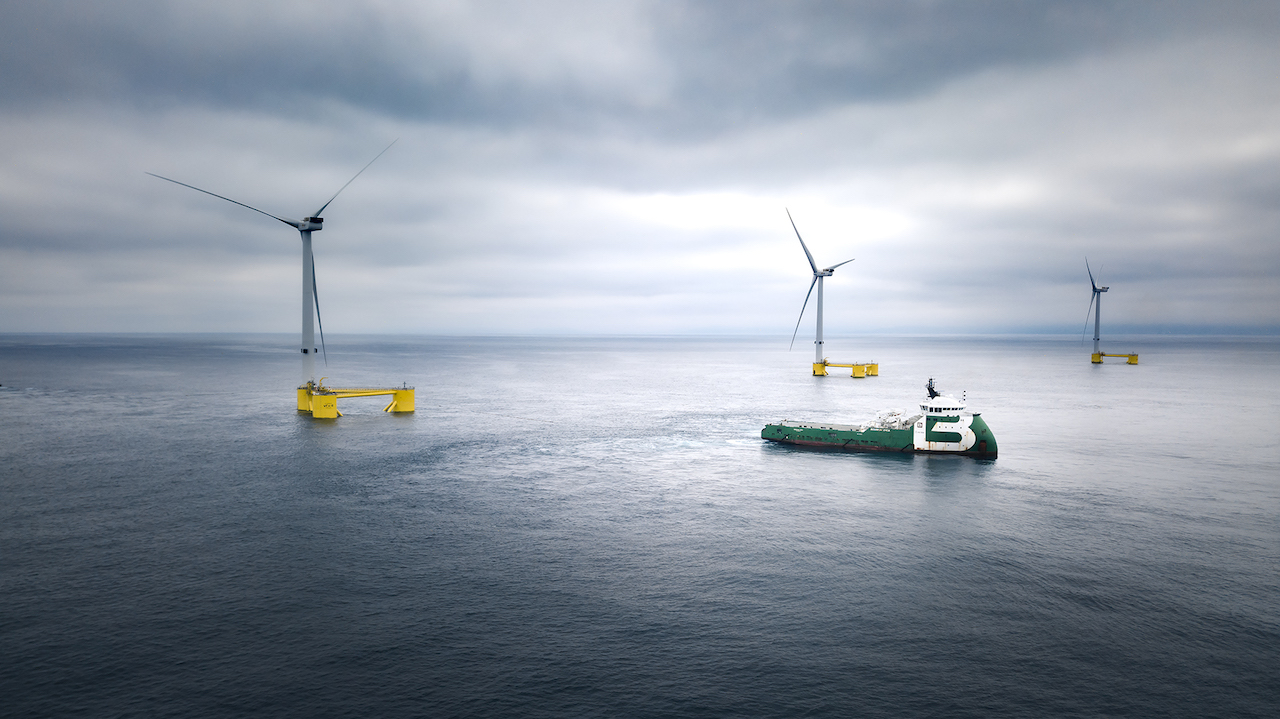British investment in floating offshore wind schemes has hit record highs, buoyed by worldwide enthusiasm for the technology, a report out today reveals.
Experts at RenewableUK, once known as the British Wind Energy Association, calculate that the UK’s pipeline of non-embedded turbines has increased from 23GW a year ago to over 33GW.
Projects operating or under development have risen from 29 in late 2021 to 51 now. Intended or achieved structures are being developed all around our coastline, in Scottish or English patches of the North Sea, in the Celtic Sea between Wales and Cornwall, and the North Atlantic.
Britain’s floating farms already operating include the 30MW Hywind Scotland, the world’s first floating installation 20 miles off Peterhead, and generating since 2017. It was surpassed in 2020 by the world’s largest, the 50MW of built structures in the Kincardine farm off Aberdeen.
Today’s figures confirm the oft-repeated “Britain as the Saudi Arabia of wind” boast, but specifically in the context of non-embedded marine turbines.
Britain continues to lead the world in floating, collared structures. That 33 GW equates to more than one-sixth of the planet’s currently envisaged total. 29GW of that identified British deployment already spins above, or is destined for, Scotland’s waters.
Worldwide and including the UK, RenewableUK’s “EnergyPulse Insights” – (membership required) – reports the total of projects has increased by around 100 in twelve months, now standing at 230. That represents more than a doubling in global capacity, from 91GW a year ago to 185GW now.
The researchers define their “pipeline” as being projects at any stage: operational, under construction, approved, in the planning system or at an early stage of development.
Outside Europe, leasing zones defined off the US west coast, projects proposed off Australia’s North South Wales, and in South Korea’s waters account for most of the rest of the surge.
The report states that by the end of 2030, floating wind capacity could reach 11GW in the UK, 31GW in Europe and 41GW globally.
The technology’s supply chain looks set soon to face new pressures. Demand for floating foundations is expected to ramp up fast, with the potential for nearly 1,000 floating foundations to be installed in UK waters by the end of 2030. Globally 3,200 floating foundations could be installed by the end of the decade.
RenewableUK’s CEO Dan McGrail said: “The growth of floating offshore wind is surging ahead at a phenomenal rate year on year around the world. We’re proud that the UK is a global leader in this innovative technology with nearly a fifth of the total pipeline – significantly greater than any other country.
“In the years ahead, as we build projects further out to sea where wind speeds are even stronger, floating wind will play a central role in proving cheap, clean electricity for British homes as well as boosting our energy security.
“It also offers a significant opportunity to build up a whole new industry in the UK, with a world-class supply chain which will enable us to export our expertise and state of the art technology worldwide,” McGrail added.




